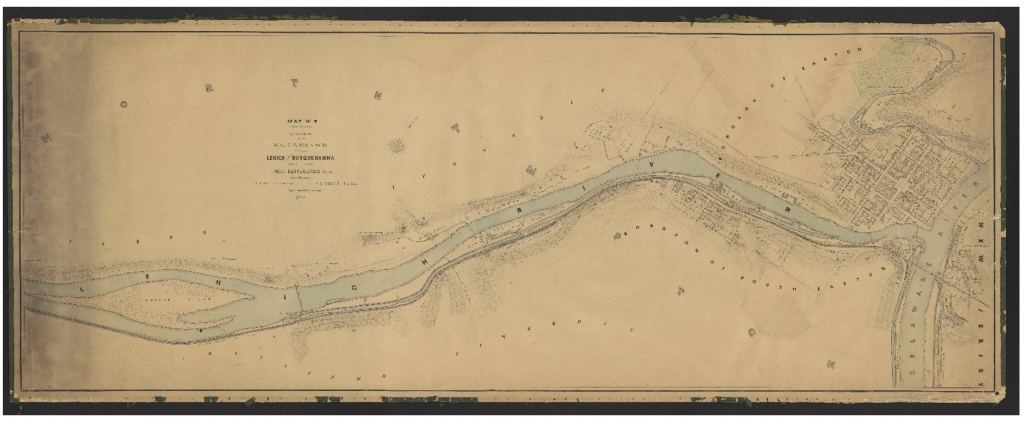The D&L Blog

Post by: Miranda Waldman, GIS Analyst Intern
My name is Miranda Waldman, and I am a rising senior at Penn State studying Geography. This summer I interned as a GIS Analyst for the D&L. As my internship comes to an end, I am here to give you a look into how I’ve spent my time with the D&L.
We obtained scans from Lehigh University of historic hand drawn maps of the Lehigh Canal from 1864. They are a series of nine maps that show the extension of the Lehigh and Susquehanna Railroad. The chief engineer on the project was John Leisenring. I took these maps and georeferenced them to modern imagery. Georeferencing means that they will line up with their correct location. This process involves selecting points on imagery and the maps that are the same in order to give the old maps spatial information. When sufficient features have been selected the maps will align.
I created a web app which allows the user to slide between the maps and current imagery, with the D&L Trail on both screens. I love this feature because you can really see how the trail is right next to history.
Check out the Lehigh Canal 1864 Map Viewer for yourself here!
Another task I completed during my time here was making Facebook pages for every D&L Trailhead. Now, each page has the location of the trailhead and the link to our website, with most of the pages having pictures included.
When trail users go to the trailheads and check in on Facebook, these new pages will be the place they use. This will make check-ins for the trail consistent and will get the word out about the D&L!
This summer, I also spent time managing our database, which included keeping our online map updated using ArcGIS Online, downloading and organizing imagery for the corridor so that it is all accessible and in the same place.
In addition, I counted how many people were on the trail. We have trail counters at some of our trailheads that count when you guys are using the trail! They need to be calibrated manually because they are not 100% accurate. For example, if two people are walking side by side past the counter, it will count them as one person. That is one of many reasons why we need to calibrate them.
I truly enjoyed my time at the D&L this summer! I have done a lot and will miss this organization when I return to school in the fall.












